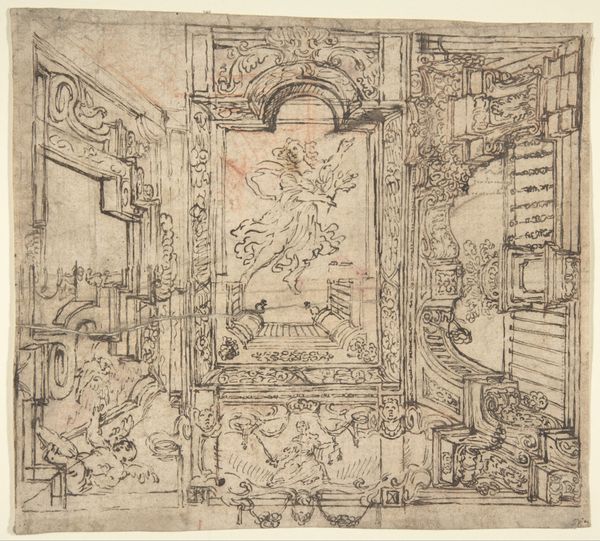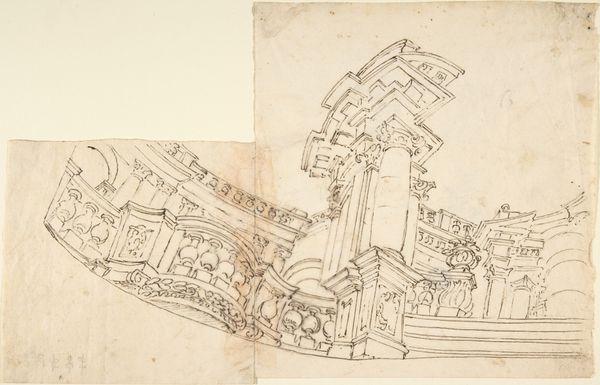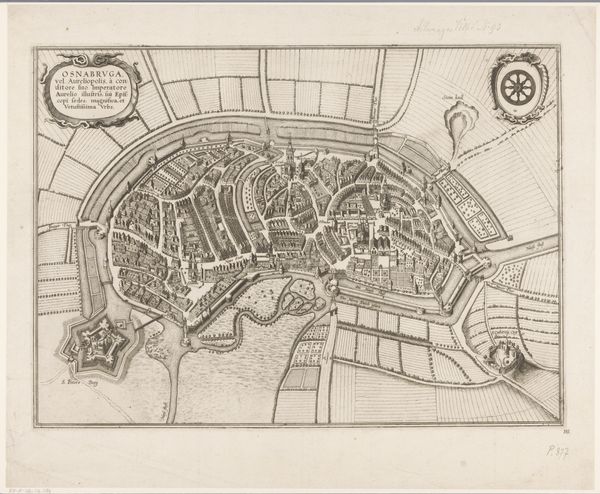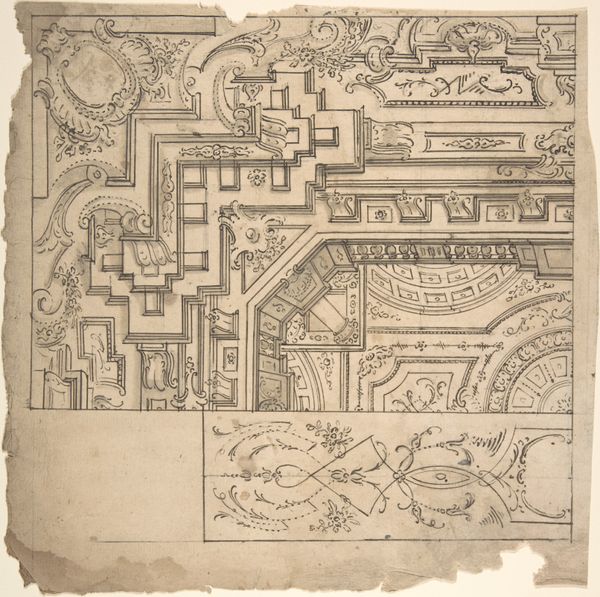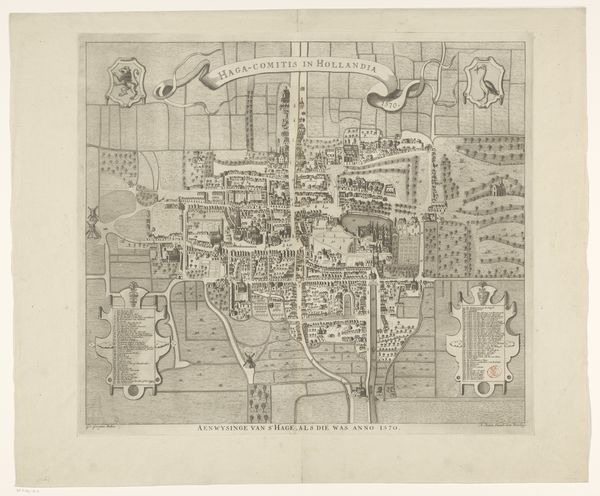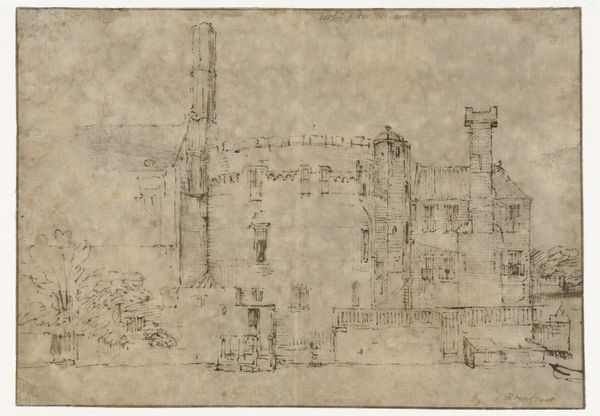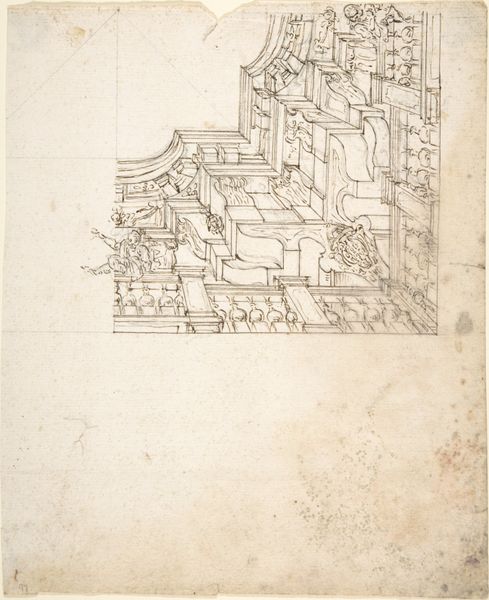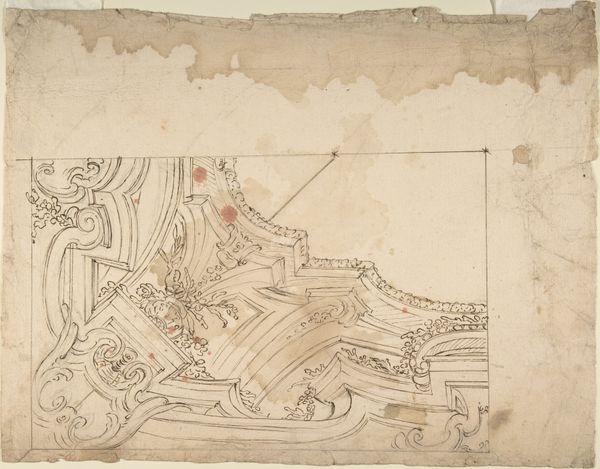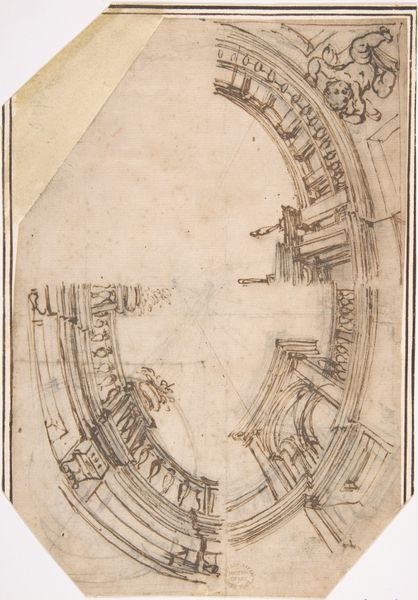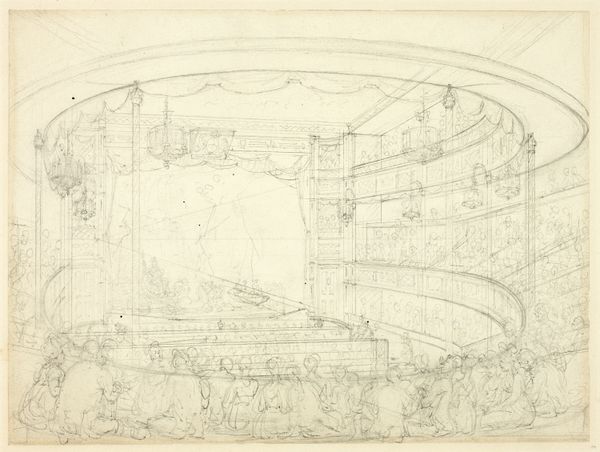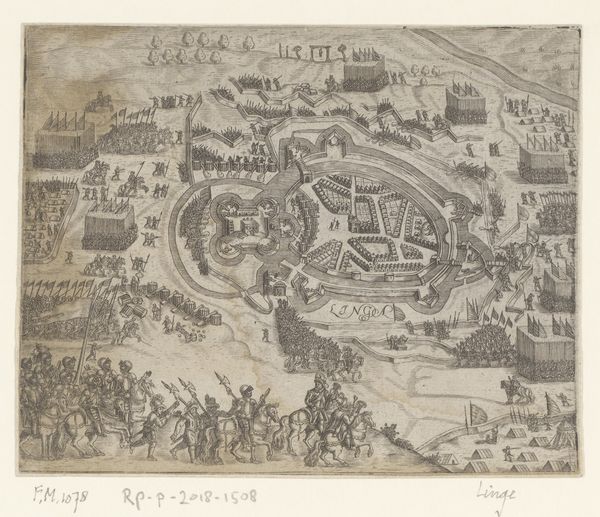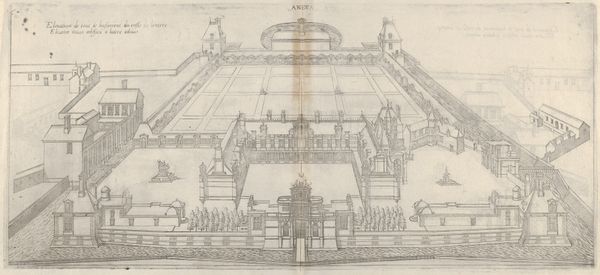
drawing, ink
#
drawing
#
asian-art
#
etching
#
ukiyo-e
#
ink
#
line
#
cityscape
Dimensions: height 36 cm, width 56.8 cm
Copyright: Rijks Museum: Open Domain
Curator: Before us, we have a drawing titled "Deshima," created around 1800 by Sasaya. It’s rendered in ink, a delicate linework showing what seems to be a cityscape. Editor: It’s intriguing—almost dreamlike in its precision. The pale background heightens this sense of fragility. But is this architectural drawing a form of resistance? What stories is the artist trying to whisper? Curator: Indeed. Deshima was a Dutch trading post in Nagasaki during Japan’s Edo period, when the country largely isolated itself from the world. This controlled commerce impacted local social norms. So, you could say this image depicts not just a place but also an environment shaped by both separation and exchange. The drawing seems intended to reveal details of daily life behind closed doors. Editor: Precisely! This visual account of Deshima takes on deeper significance. In these historical, isolated spaces, cross-cultural exchanges happened that are rarely explored from this intimate view, as the Japanese and Dutch were both heavily invested in the practice of maintaining isolation. Sasaya presents it from above in what almost appears as a vulnerable offering, which emphasizes how complex our histories of 'trade' really are. Curator: The precision and the clear lines of the architecture do strike a certain bureaucratic tone, a measured portrayal almost mimicking how trade was monitored at that time. This bird’s-eye perspective almost evokes how political views affect art, influencing even the style of depictions such as these, wouldn't you agree? Editor: Yes, it mirrors it. However, it might not be fair to confine our understanding to just government control. Remember that these representations served multiple purposes. They were functional, showing a real depiction of Deshima, but the choices that Sasaya took for its rendering can represent multiple different angles from Japanese isolationist ideas. Curator: Fascinating how this intricate cityscape embodies not just the geography of a bygone era, but also the layered narratives that constructed and questioned it. Editor: Exactly. "Deshima" invites us to think deeply about those exchanges. And even question what perspectives and choices are being rendered visible…or perhaps erased in these historic documents.
Comments
No comments
Be the first to comment and join the conversation on the ultimate creative platform.
